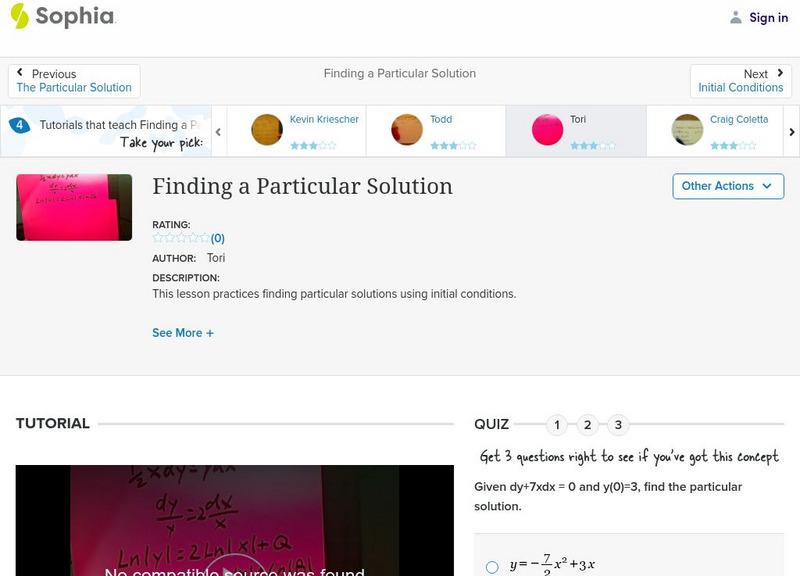Brian McLogan
Exam Review Find the general solution with multi angles
👉 Learn how to evaluate the double angle of sine. The value of the sine of double a given angle can be obtained given the value of the sine of the angle. The value of the sine of double a given angle is obtained using the formula sin(2u)...
msvgo
Differential Equations: Variable Separable Form
It discusses and explains the method to solve differential equation of variables separable form.
Curated Video
Data Science and Machine Learning (Theory and Projects) A to Z - Basics of Programming: Understanding the Algorithm
In this video, we will understand the algorithm. This clip is from the chapter "Basics for Data Science: Python for Data Science and Data Analysis" of the series "Data Science and Machine Learning (Theory and Projects) A to Z".In this...
Curated Video
Data Science and Machine Learning (Theory and Projects) A to Z - Basics of Programming: Example of Algorithms - Making Tea Problem
In this video, we will cover string methods. This clip is from the chapter "Basics for Data Science: Python for Data Science and Data Analysis" of the series "Data Science and Machine Learning (Theory and Projects) A to Z".In this...
Brian McLogan
General solution of a separable equation
Learn how to solve the particular solution of differential equations. A differential equation is an equation that relates a function with its derivatives. The solution to a differential equation involves two parts: the general solution...
msvgo
Solving Homogeneous Differential Equations
It defines homogeneous differential equation and explains method to solve it.
Math Fortress
Differential Equations: Families of Solutions (Level 1 of 4)
This video introduces the basic concepts associated with solutions of ordinary differential equations. This video goes over families of solutions. In addition, particular solutions, general solutions, singular solutions, and...
Virtually Passed
Wave equation: Vibrating String Proof
The 1 dimensional wave equation is solved here using the separation of variables technique (assuming u(x,t) = phi(x) q(t). I simplify the formula further using the boundary conditions: u(0,t) = 0 and u(L,t) = 0 The constants in the final...
Sophia Learning
Sophia: Finding a Particular Solution: Lesson 4
This lesson practices finding particular solutions using initial conditions. It is 4 of 6 in the series titled "Finding a Particular Solution."
Sophia Learning
Sophia: Finding a Particular Solution: Lesson 5
This lesson practices finding particular solutions using initial conditions. It is 5 of 6 in the series titled "Finding a Particular Solution."
Sophia Learning
Sophia: Finding a Particular Solution: Lesson 6
This lesson practices finding particular solutions using initial conditions. It is 6 of 6 in the series titled "Finding a Particular Solution."
Sophia Learning
Sophia: Finding a Particular Solution: Lesson 2
This lesson practices finding particular solutions using initial conditions. It is 2 of 6 in the series titled "Finding a Particular Solution."




